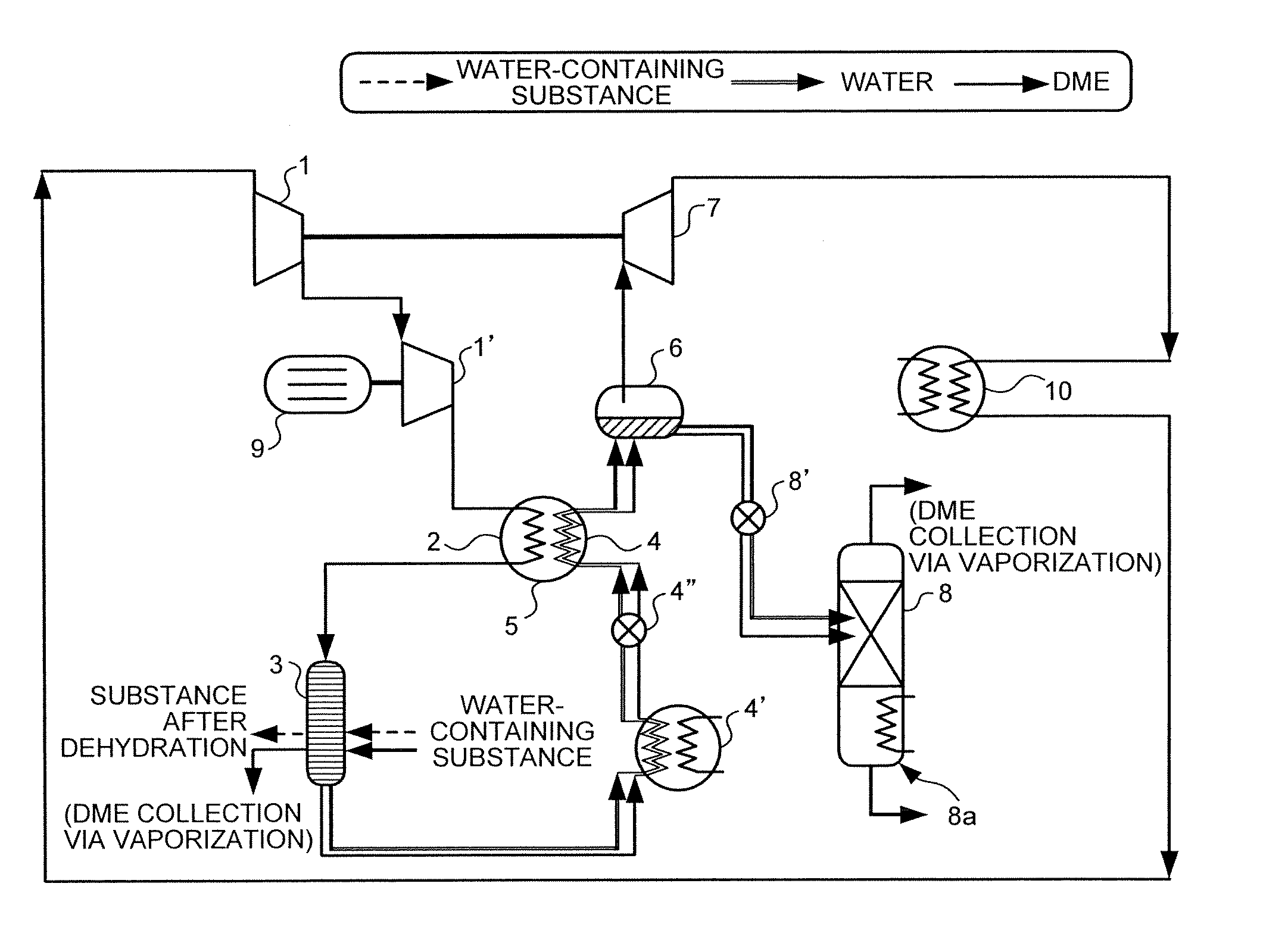Method for dehydrating water-containing substance using liquefied matter
a technology of liquefied matter and water-containing substances, which is applied in the direction of liquid degasification, separation processes, furnaces, etc., can solve the problems of inability to efficiently fractionate, poor pulverization efficiency, and disadvantages of methods in terms of resource conservation, so as to facilitate reuse and disposal of water-containing substances, reduce the effect of pulverization efficiency and reducing the amount of contained water
- Summary
- Abstract
- Description
- Claims
- Application Information
AI Technical Summary
Benefits of technology
Problems solved by technology
Method used
Image
Examples
example 1
Dehydration Test of Paper Diaper
[0121] Using 10 sheets of paper diapers (average dry weight: 0.455 g), 600 g (2 sheets), 500 g (4 sheets) or 250 g (4 sheets) of artificial urine composed of the following composition was impregnated per sheet, and this was made one batch. Seven batches were subjected to the test. A total amount of the artificial urine absorbed to 10 sheets of the paper diapers was all 4.2 kg per batch.
[Composition of artificial urine: Contents in 1019.2 g (1 L)]Ion-exchange water 984 gUrea20.7 gNaCl6.48 gKCl0.64 gK2SO43.21 gNa3PO42.55 gNH4Cl1.58 g
[0122] The paper diapers in a water-containing state prepared as the above were dehydrated using liquefied dimethyl ether (DME) with purity of 99% or more by a test model of the dehydration system shown in FIG. 1.
[0123] That is, the paper diapers in the water-containing state were filled in a container corresponding to the dehydrator 3 in FIG. 1, and the weight including the container was measured as a total every batch ...
example 2
Dehydration Test of Sanitary Products
[0129] Using 32 sanitary products (average dry weight: 36.7 g), 60 g of artificial blood composed of the following composition was impregnated per product, which were then subjected to the test. The total amount of the artificial blood absorbed in 32 sanitary products was 1.92 kg.
[Composition of artificial blood: Contents in 1059.9 g (1 L)]Ion-exchange water 852 gUrea0.22 gGlucose0.65 gNaCl3.96 gKCl0.18 gBovine hemoglobin 163 gBovine albumin23.1 gBovine globulin16.8 g
[0130] The dehydration was performed by the same way as in Example 1, except that the sanitary product was used in place of the paper diaper, the distribution rate was 100 L / hour and the dehydration time period was 2 hours. The test was repeated seven times under the same condition, and the result was represented by their mean value.
[0131] As a result, 1.71 kg of the artificial blood was eliminated from 32 sanitary products, indicating that the majority of an initially absorbed a...
example 3
Dehydration Test of Wood Chips
[0133] The dehydration test was performed by the same way as in Example 1, except that 3.11 kg of wet wood chips was used, and the distribution rate was 100 L / hour and the dehydration time period was 3 hours. The test was repeated five times under the same condition, and consequently 1.99 kg as the average was discharged.
[0134] From these results, it has been confirmed that according to the present invention, the large amount of contained water can be easily eliminated from the water-containing (wet) wood chips in a short time period.
PUM
| Property | Measurement | Unit |
|---|---|---|
| atmospheric pressure | aaaaa | aaaaa |
| temperature | aaaaa | aaaaa |
| temperature | aaaaa | aaaaa |
Abstract
Description
Claims
Application Information
 Login to View More
Login to View More - R&D
- Intellectual Property
- Life Sciences
- Materials
- Tech Scout
- Unparalleled Data Quality
- Higher Quality Content
- 60% Fewer Hallucinations
Browse by: Latest US Patents, China's latest patents, Technical Efficacy Thesaurus, Application Domain, Technology Topic, Popular Technical Reports.
© 2025 PatSnap. All rights reserved.Legal|Privacy policy|Modern Slavery Act Transparency Statement|Sitemap|About US| Contact US: help@patsnap.com



